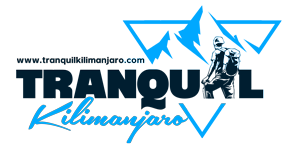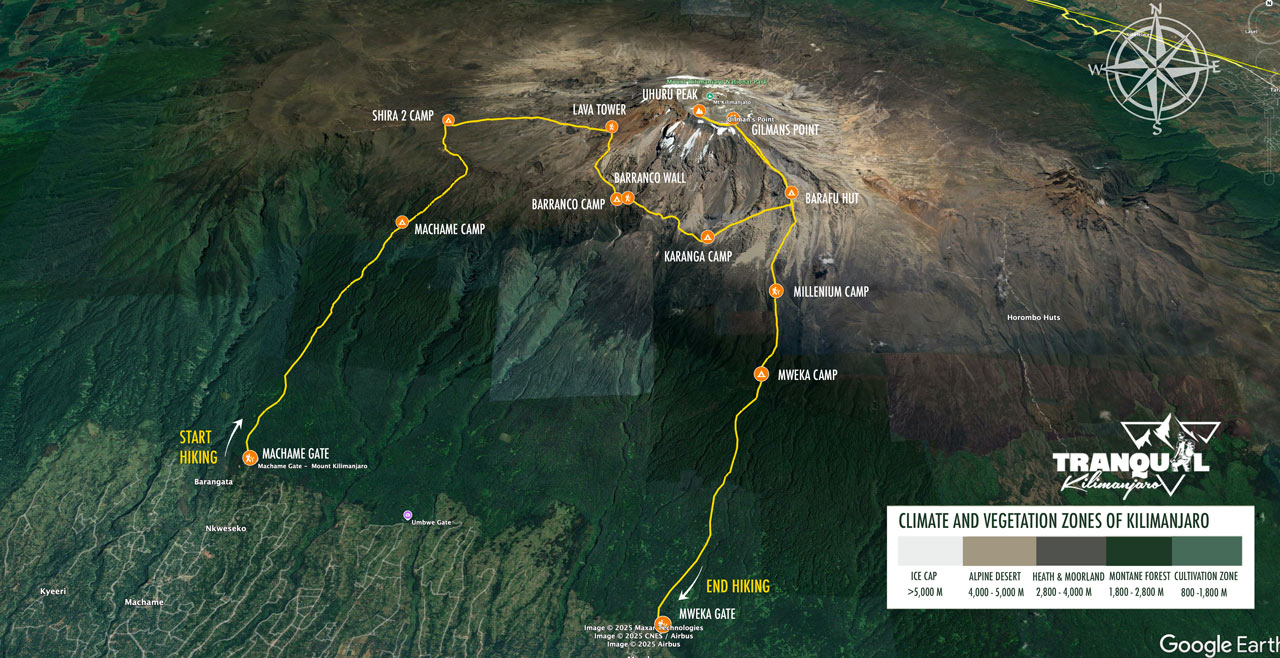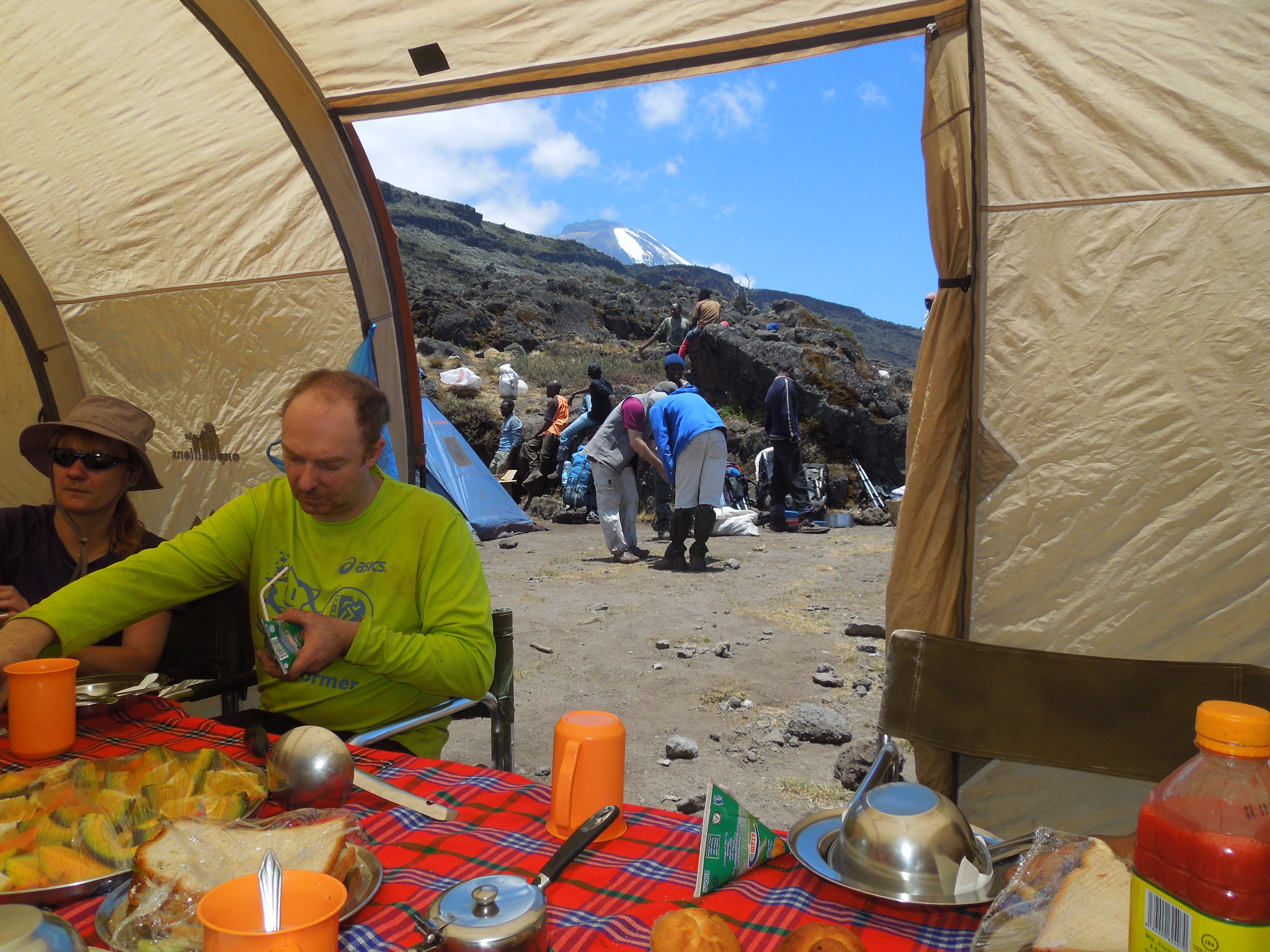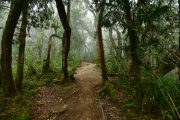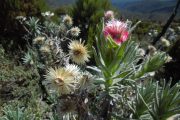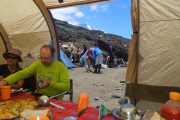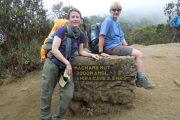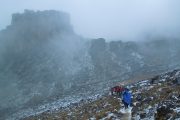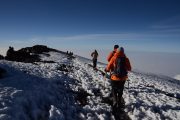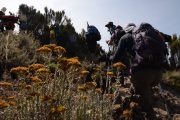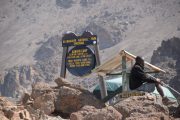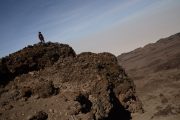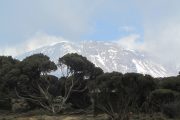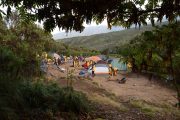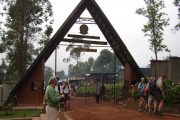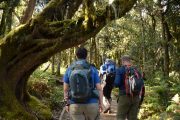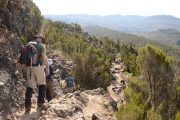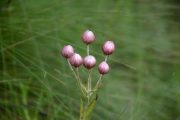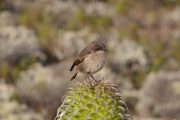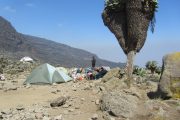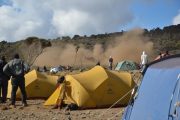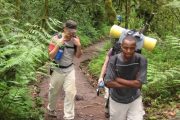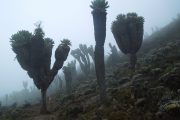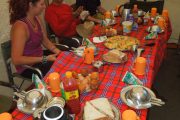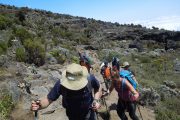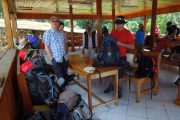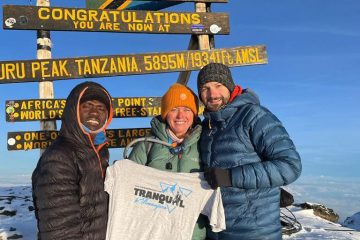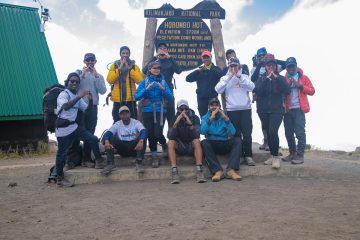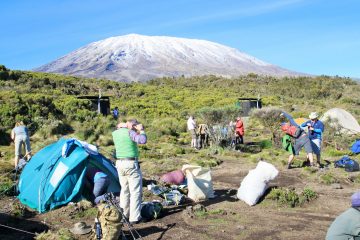Difficulty
The Machame route is renowned for its demanding nature. You’ll trek for 6-7 hours daily at increasing altitudes, with the summit push requiring 12-15 hours of continuous effort—6-8 hours ascending and 6-7 hours descending. Success on this route depends on excellent physical fitness and a calm, determined mindset.
Novice climbers may feel nervous about the Great Barranco Wall, but it’s essentially a short scramble rather than a technical climb. Your guide will provide constant support, and the most challenging part involves a single careful step around a rock outcrop. Thousands of climbers, including porters carrying heavy loads, safely navigate this section every year.
For personalized training advice, consider Kate Sielmann’s mountaineering and trekking coaching programs. More details can be found [here](insert link).
Food & Drink
Proper nutrition is critical during your climb, especially as altitude can suppress your appetite. Our head chef has designed delicious, energy-packed menus to keep you fueled. Fresh fruits and vegetables are provided daily, with meat available at the start of the trek and restocked at Karanga Camp on southern routes. After summiting, savor an “All Day English Breakfast” at Base Camp, complete with eggs cooked to your preference. Before descending, enjoy traditional Tanzanian dishes like Njegere and Machalari.
Accommodation
Your itinerary outlines hotel stays and meal plans, with accommodations in Moshi for pre- and post-climb stays, or Arusha for those going on safari. Hotels operate on a B&B basis, allowing you to purchase additional meals or snacks using Tanzanian Shillings or US Dollars. Upon arrival, familiarize yourself with the hotel layout and fire safety procedures.
Note that power and water outages are common in Tanzania, which may affect hot water availability in hotels.
During the climb, we provide Mountain Hardwear Trango 3 tents, designed for extreme conditions but not for standing room. If dust causes zippers to jam, our guides carry WD-40 for quick fixes. Meals are served in a spacious, waterproof mess tent with comfortable seating. A separate toilet tent with toilet paper is also provided.
Transport
We prioritize high-quality vehicles and experienced drivers for all transfers. While rear seatbelts are not mandatory in Tanzania, we ensure safety standards are met. If you have any concerns about the transport or driving, notify the driver or our local office immediately. Routine police checks are common and not a cause for concern.
Luggage
- Climbing Bag Weight: Kilimanjaro National Park enforces a 15kg limit per porter, including your sleeping bag. Bags are weighed at the hotel; excess weight may require leaving items behind or hiring additional porters at $25 per day.
- Plastic Bag Ban: Single-use plastic bags have been banned in Tanzania since June 1, 2019. Use sustainable alternatives like packing cubes. Airport zip-lock bags for liquids are still permitted.
How Do I Get There?
For travelers from the UK or US, fly into Kilimanjaro International Airport (JRO). KLM offers flights from major airports with a stopover in Amsterdam. Our tours begin in Moshi, a short drive from JRO, where we arrange your transport. Plan a rest day after your flight for acclimatization. We recommend avoiding flights through Nairobi due to reported inconveniences. Turkish Airlines, Emirates, and Qatar Airways offer excellent service from North America. For post-climb relaxation, consider flights to Zanzibar from Dar es Salaam.
Travelling Responsibly
Starting in 2025, we offset carbon emissions for your trip from arrival to departure, excluding flights. Use our eCO2 calculator to estimate and offset your flight emissions.
Fitness and Training
Refer to our Kilimanjaro Training Guide for comprehensive advice on physical preparation.
Budget & Currency
The Tanzanian Shilling is not available abroad, so bring new US dollars. Use ATMs or airport exchanges to obtain local currency. Notify your bank of international card use to avoid issues.
Tipping
We adhere to the Kilimanjaro Porters Assistance Project guidelines:
- Porters: $6-10/day
- Guides: $20/day
- Assistant Guides & Cooks: $12-15/day per group
For summit support porters, an additional $20 tip is recommended. Tips are announced and distributed on the final night. For security, bring cash for tips to the hotel after the climb, using provided envelopes for distribution.
